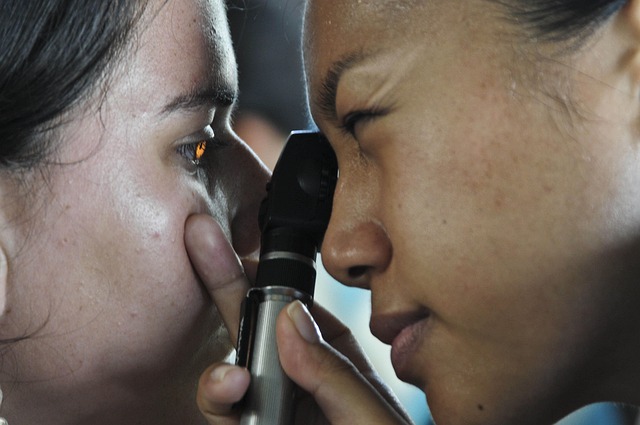Understanding Depression Tests: Types, Uses, and What to Expect
Depression affects millions of people worldwide, making reliable screening tools essential for proper diagnosis and treatment. Depression tests are standardized questionnaires designed to assess symptoms and severity of depressive disorders. These assessments help healthcare providers determine appropriate treatment plans and monitor progress over time. Whether you're experiencing symptoms yourself or concerned about a loved one, understanding how these tests work can be an important step toward getting proper care.

What Is a Depression Test?
A depression test is a screening tool used by healthcare professionals to evaluate the presence and severity of depressive symptoms. These assessments typically consist of a series of questions about mood, behavior, and physical symptoms experienced over a specific timeframe. While these tests cannot diagnose depression on their own, they provide valuable information that helps clinicians make informed decisions about further evaluation and treatment options. Depression tests vary in length and focus, with some designed for general screening while others target specific populations or types of depression.
Types of Free Depression Tests Available Online
Many reputable organizations offer free depression tests online, providing accessible preliminary screening options. These include the Patient Health Questionnaire-9 (PHQ-9), a widely used nine-question assessment that evaluates the frequency and severity of depressive symptoms over the past two weeks. The Beck Depression Inventory is another common tool, though the full version typically requires professional administration. Mental health organizations like Mental Health America and the Anxiety and Depression Association of America offer free screenings on their websites. While convenient, it’s important to remember that online tests should be followed by professional consultation for proper diagnosis and treatment recommendations.
Depression and Anxiety Identifying Co-occurring Conditions
Depression and anxiety frequently occur together, with approximately 60% of people with anxiety also experiencing depression at some point. Combined depression and anxiety tests, such as the Depression Anxiety Stress Scales (DASS-21), screen for both conditions simultaneously. These comprehensive assessments help identify the complex relationship between anxiety and depressive symptoms, which can manifest as persistent worry, irritability, difficulty concentrating, sleep disturbances, and physical symptoms like muscle tension or digestive issues. Recognizing the overlap between these conditions is crucial for developing effective treatment plans that address both sets of symptoms.
Bipolar Depression Differentiating Depression Types
Bipolar disorder involves periods of depression alternating with episodes of mania or hypomania, making it distinct from major depressive disorder. Specialized bipolar depression tests, such as the Mood Disorder Questionnaire (MDQ) and the Bipolar Spectrum Diagnostic Scale (BSDS), help identify signs of bipolar disorder that might otherwise be missed during standard depression screening. These assessments specifically look for past manic or hypomanic episodes characterized by elevated mood, decreased need for sleep, racing thoughts, increased energy, and impulsive behavior. Proper differentiation between unipolar and bipolar depression is essential, as treatment approaches differ significantly between these conditions.
Depression Test for Teens: Age-Appropriate Assessment
Adolescent depression often presents differently than adult depression, with symptoms that may include irritability, social withdrawal, academic decline, and risk-taking behaviors. The Center for Epidemiological Studies Depression Scale for Children (CES-DC) and the Reynolds Adolescent Depression Scale (RADS-2) are specifically designed for teens, with age-appropriate language and content. These assessments consider developmental factors and common adolescent experiences while screening for depressive symptoms. Early detection is particularly important in this age group, as depression can significantly impact educational outcomes, social development, and long-term mental health.
What to Expect During a Clinical Depression Assessment
Professional depression assessments typically involve multiple components beyond standardized questionnaires. A comprehensive evaluation includes a detailed medical and psychiatric history, physical examination, laboratory tests to rule out medical conditions that mimic depression, and in-depth discussion of symptoms and their impact on daily functioning. Clinicians may use structured interviews like the Hamilton Depression Rating Scale (HAM-D) or Montgomery-Åsberg Depression Rating Scale (MADRS) to systematically assess symptoms. The assessment process usually takes 45-90 minutes for an initial evaluation, with follow-up assessments being shorter. Results are typically discussed immediately or during a follow-up appointment, along with treatment recommendations.
When preparing for a professional assessment, it’s helpful to bring notes about your symptoms, including when they started, their severity, and how they affect your daily life. Information about your medical history, current medications, family history of mental health conditions, and any previous mental health treatment is also valuable. Being honest and thorough during the assessment process ensures the most accurate results and appropriate treatment recommendations.
This article is for informational purposes only and should not be considered medical advice. Please consult a qualified healthcare professional for personalized guidance and treatment.




